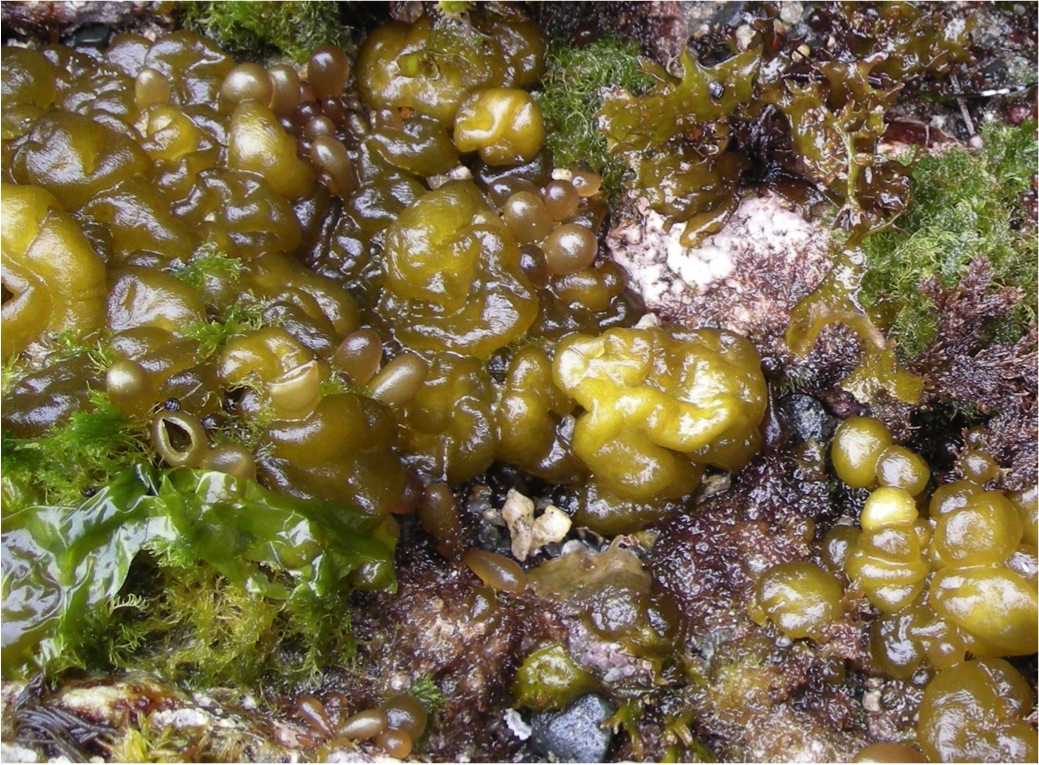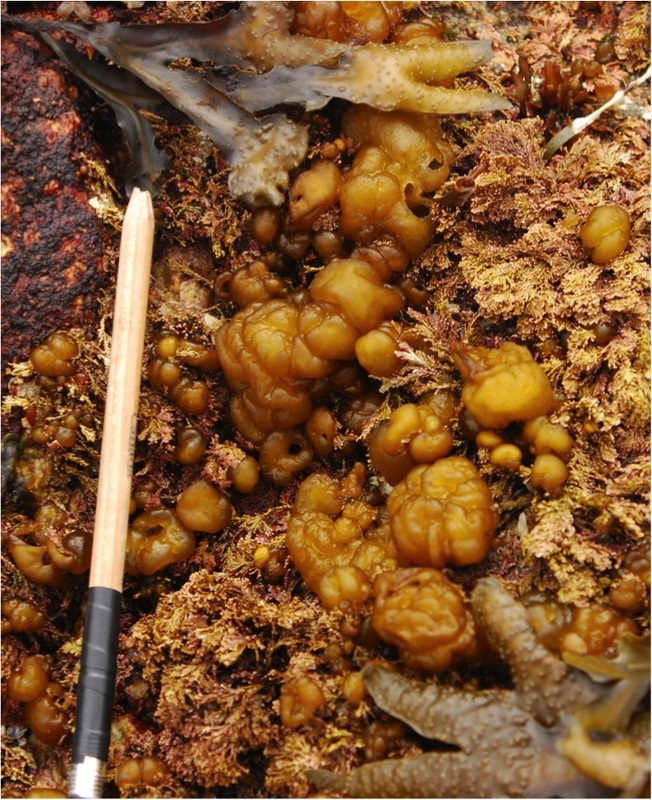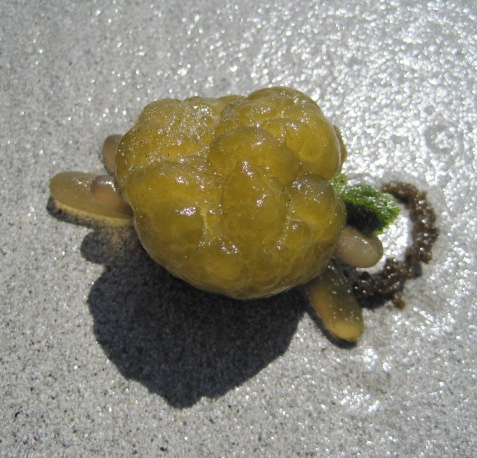Sea cauliflower, sea potato, golden spongy cushions • Leathesia marina, Leathesia difformis
|
Top and left: sea cauliflower growing with other algae in a rocky intertidal area of Calvert Island. Photos by Claire Mackenzie and Joel White respectively. Right: A single sea cauliflower growth, with sea sacs attached behind. Photo by Gillian Harvey.
|
Identification
Sea cauliflower is a distinctive brown seaweed — its globular, brain-like growths are hard to miss. It has a bumpy, spongy texture, and ranges in colour from golden to yellowish-brown. It may be found in small groups or forming bumpy carpets over larger areas.
Habitat & Range
Sea cauliflower grows in high to low intertidal and in tidepools on semi-exposed to protected shorelines. It attaches to rocks or epiphytically to other algae such as articulated coralline alage. Its range stretches from the Bering Sea to Mexico. It is also found along the coast of Chile, the western North Pacific, the North Atlantic, and the North Sea.
Similar Species
Immature sea cauliflower can be confused with immature studded sea balloons (Soranthera ulvoidea). Bulb seaweed (Colpomenia peregrina) is another globular algae, but can be differentiated by its smooth, thin-walled surface as opposed to sea cauliflower's bumpy, brain-like surface. If sea cauliflower is squeezed it will break apart, whereas bulb seaweed will not.
Intriguing Info
Carl Linnaeus thought sea cauliflower was a jelly fungus.
Sea cauliflower is a distinctive brown seaweed — its globular, brain-like growths are hard to miss. It has a bumpy, spongy texture, and ranges in colour from golden to yellowish-brown. It may be found in small groups or forming bumpy carpets over larger areas.
Habitat & Range
Sea cauliflower grows in high to low intertidal and in tidepools on semi-exposed to protected shorelines. It attaches to rocks or epiphytically to other algae such as articulated coralline alage. Its range stretches from the Bering Sea to Mexico. It is also found along the coast of Chile, the western North Pacific, the North Atlantic, and the North Sea.
Similar Species
Immature sea cauliflower can be confused with immature studded sea balloons (Soranthera ulvoidea). Bulb seaweed (Colpomenia peregrina) is another globular algae, but can be differentiated by its smooth, thin-walled surface as opposed to sea cauliflower's bumpy, brain-like surface. If sea cauliflower is squeezed it will break apart, whereas bulb seaweed will not.
Intriguing Info
Carl Linnaeus thought sea cauliflower was a jelly fungus.
References
Lamb, A., and Hanby, B. (2005). Marine Life of the Pacific Northwest. Madeira Park, BC: Harbour Publishing. P. 205.
O'Clair, R. and Lindstrom, S. Leathesia marina (Linnaeus) Areschoug. . In Klinkenberg, Brian. (Ed.). E-Flora BC: Electronic Atlas of the Plants of British Columbia. Lab for Advanced Spatial Analysis, Department of Geography, University of British Columbia, Vancouver. Accessed 16/09/2013.
Authors and editors of page
Kelly Fretwell and Brian Starzomski (2013).
Lamb, A., and Hanby, B. (2005). Marine Life of the Pacific Northwest. Madeira Park, BC: Harbour Publishing. P. 205.
O'Clair, R. and Lindstrom, S. Leathesia marina (Linnaeus) Areschoug. . In Klinkenberg, Brian. (Ed.). E-Flora BC: Electronic Atlas of the Plants of British Columbia. Lab for Advanced Spatial Analysis, Department of Geography, University of British Columbia, Vancouver. Accessed 16/09/2013.
Authors and editors of page
Kelly Fretwell and Brian Starzomski (2013).






